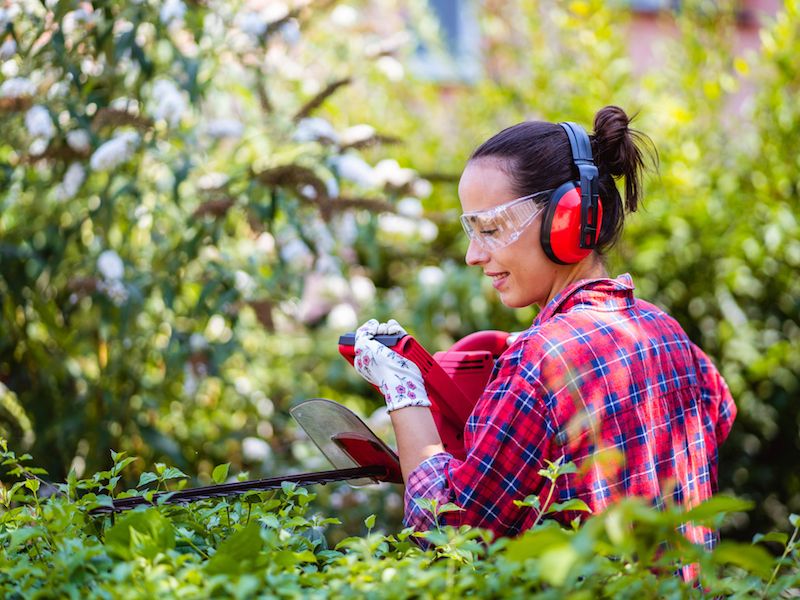
Protecting your hearing is a lot like eating right. It’s difficult to know where to begin even though it sounds like a smart idea. This is particularly true if you don’t consider your daily environment to be very noisy and there aren’t any apparent risks to your ears. But your ears and senses can be stressed by everyday living, so your auditory acuity can be preserved if you practice these tips.
The more you can do to delay the deterioration of your hearing, the longer you’ll be capable of enjoying the sounds around you.
Tip 1: Ear Protection You Can Wear
The most simple and sensible way that you can safeguard your ears is to protect your ears. This means taking basic steps to diminish the amount of loud and harmful noises you’re subjected to.
This means that when it’s called for most people will want to use hearing protection. Two general forms of protection are available:
- Ear Plugs, which are put in the ear canal.
- Ear Muffs, which are put over the ears.
Neither form of hearing protection is inherently better than the other. There are benefits to each style. Your choice of hearing protection should, most notably, feel comfortable.
Tip 2: When Sound Gets Harmful, be Aware of It
But how can you tell when to use hearing protection? We’re used to connecting dangerous noise with painful noise. But much lower levels of sound can harm your ears than you might realize. The sounds of traffic, as an example, are loud enough to start damaging your hearing after just a couple of hours. Knowing when sound becomes harmful, then, is a necessary step in protecting your hearing.
The following threshold is when sound becomes hazardous:
- Over 100 dB: This is where you can damage your hearing very rapidly. Anything over this threshold can injure your hearing in minutes or seconds. For instance, rock concerts and jet engines will injure your hearing in 30 seconds.
- 85 decibels (dB): This level of sound is hazardous after roughly two hours of exposure. This is the level of sound you’d expect from a busy city street or your hairdryer.
- 95-100 dB: This is the typical volume of your earbuds or the level of farm equipment. This level of sound becomes damaging after 15-20 minutes.
Tip 3: Your Phone Can Be a Sound Meter
Now that we have a general understanding of what volume of sound may be harmful, we can take some steps to make sure we minimize our exposure. But in everyday life, it can be difficult trying to measure what is too loud and what isn’t.
Your smartphone can now be used as a handy little tool. There are dozens of apps for iPhone, Android, and everything in between that turn your device’s microphone into a sound meter.
In order to get an idea of what harmful levels of noise actually sound like, use your sound meter to confirm the decibel level of everything you are hearing.
Tip 4: Be Mindful of Your Volume Buttons
Most people these days listen to music via their phone or smart device, and they usually use earbuds while they do it. This sets up a risky situation for your hearing. Over time, earbuds set to a sufficiently high volume can cause considerable damage to your ears.
That’s why safeguarding your ears means keeping a focused eye on your volume management. In order to drown out sounds somewhere else, you should not increase the sound level. in order to make certain that volume doesn’t get too loud, we suggest using volume settings or app settings.
If your hearing begins to wane, earbuds can become something of a negative feedback loop; you could find yourself consistently increasing the volume of your earbuds in order to compensate for your declining hearing, doing more damage to your ears in the process.
Tip 5: Get Your Hearing Examined
You might think of a hearing test as something you get when your hearing has already started to diminish. Without a baseline to compare results to, it’s not always easy to detect a problem in your hearing.
Scheduling a hearing screening or exam is a good way to come up with data that can be used for both treatment and diagnostic purposes, making certain that all of your future hearing (and hearing protection) choices have some added context and information.
Pay Attention to Your Hearing
It would be ideal if you could continuously safeguard your ears without any hassles. But there are always going to be challenges. So protect your hearing when you can, as often as possible. Also, get routine hearing exams. Use these suggestions to improve your chances.
